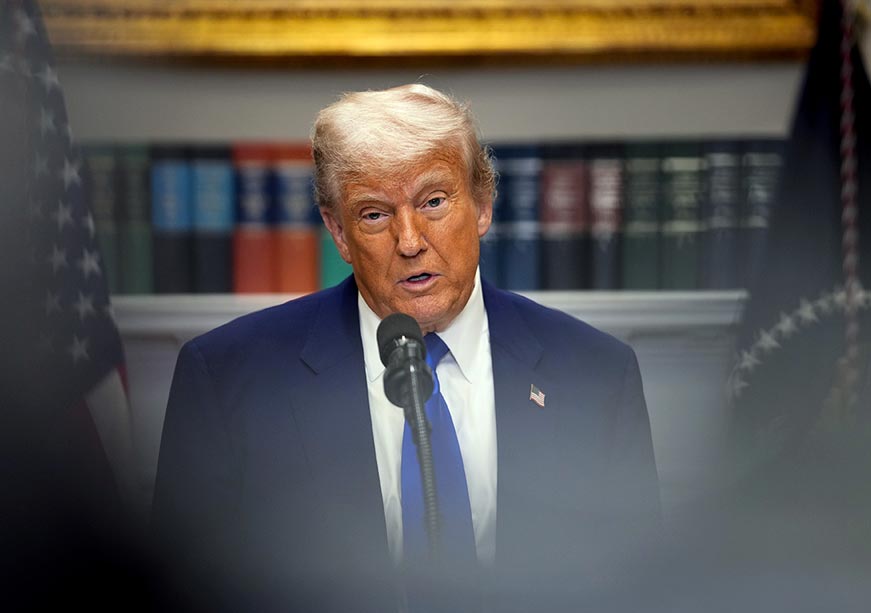
Introduction
U.S. stock markets took a hit on Friday, May 23, 2025, as the Dow Jones Industrial Average fell more than 400 points in early trading. The sharp decline came in response to President Donald Trump’s renewed trade threats, including a proposed 50% tariff on European Union goods starting June 1 and a 25% tariff on Apple products manufactured outside the U.S. This escalation in trade rhetoric has reignited fears of a broader trade war, sending ripples through global markets.
Market Reaction to Tariff Threats
The Dow Jones Industrial Average dropped by 1.04%, while the S&P 500 and Nasdaq fell 1.15% and 1.59%, respectively. Apple, a major player in the tech sector, saw its shares tumble 3.8% after Trump’s warning that iPhones made abroad would face a 25% tariff unless production shifts to the U.S. European markets also declined, with the Euro weakening against the Dollar, while gold prices surged as investors sought safe-haven assets amid the uncertainty.
Trump’s tariff threats, announced via Truth Social, cited stalled trade negotiations and an “unacceptable” U.S. trade deficit with the EU. The proposed 50% tariff on EU goods, set to begin next weekend, has heightened tensions, especially after recent U.S. trade deals with the UK and China had briefly boosted market optimism. However, the renewed focus on tariffs has shifted sentiment, with investors now grappling with fears of inflation and economic slowdown.
Broader Economic Context
The market’s reaction comes amid ongoing concerns about the U.S. economy. Recent data showed the U.S. imported record amounts from countries like Mexico and Vietnam, but imports from China hit a five-year low due to existing high tariffs. Meanwhile, S&P Global’s flash U.S. composite PMI rose to 52.1 in May, signaling growth in services and manufacturing, but the tariff threats risk undermining this progress. Economists warn that such aggressive trade policies could lead to higher consumer prices and slower growth, echoing concerns raised by the Federal Reserve earlier this month.
Global Implications
The tariff threats have also rattled international markets. Asian markets closed mixed, reflecting caution, while oil prices dipped due to global demand concerns. The World Trade Organization previously warned that Trump’s tariff policies could lead to a 1.5% decline in global goods trade, particularly impacting export-dependent nations. The EU, in response, has offered a new trade deal including lobster, but negotiations remain uncertain as the deadline looms.
What’s Next?
As markets brace for potential trade disruptions, investors are left in a precarious position, trying to anticipate Trump’s next moves. The President’s trade strategy, described as erratic by some analysts, continues to create volatility. While Trump has suggested tariffs could stimulate U.S. manufacturing, critics argue they risk triggering inflation and recessionary pressures. With the June 1 deadline approaching, all eyes are on whether the EU and U.S. can reach a deal to avert further escalation.
Conclusion
Friday’s market slide underscores the significant impact of trade policy on global financial markets. Trump’s aggressive tariff threats against the EU and Apple have reignited fears of a trade war, wiping out recent market gains and leaving investors on edge. As the situation develops, businesses and consumers alike will be watching closely for signs of resolution or further economic turbulence. Stay tuned for updates as this story unfolds.
Source:
- Crypto News: Dow slips 400 points after Trump’s 50% tariff threat on EU
- Times of India: Wall Street opens sharply lower
- Hindustan Times: Why did Dow futures fall 600 points today?
- Yahoo Finance: Tariffs live updates
- The Guardian: Federal Reserve warns of inflation and jobs risks
- CNBC: Global trade outlook has deteriorated sharply








